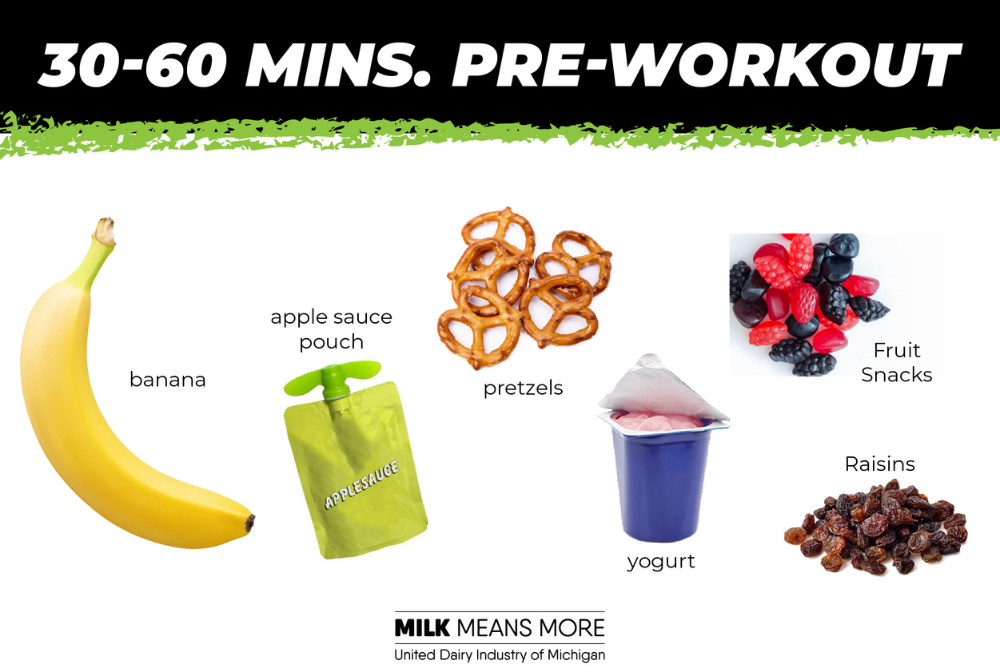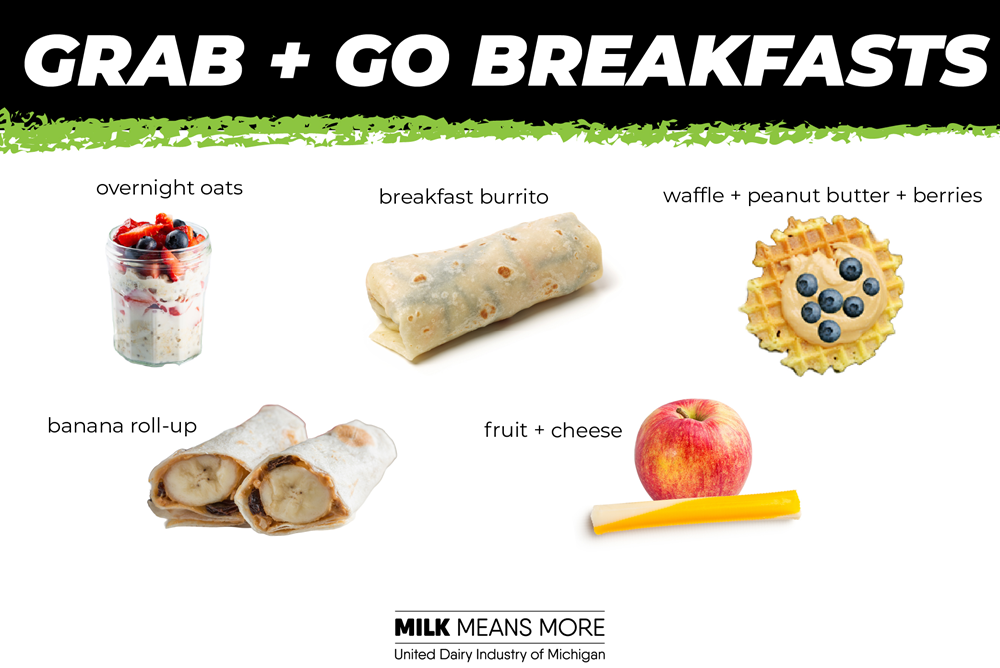
Coach's Guide to Nutrition: Pre-Workout Snacks
September 10, 2024
Heading into practice or a game under-fueled may take away from athlete performance. Encourage student-athletes to not only eat regularly throughout the day, but to have a small, carbohydrate-focused snack about 30-60 minutes before activity. This will top off their energy stores so they are ready to hit the field.
Pre-workout snacks don’t have to be complicated. Choose easy, high-carb snacks that can be stored safely in a gym bag.
Snacking can be detrimental when done out of boredom or in place of regular, balanced meals. But, for an athlete, healthy snacks can aid performance and recovery.
In planning to eat every 3-4 hours, a mid-morning snack may be ideal. Having a snack in the hour or two before practice and in the ‘window of opportunity’ following practice can help maintain energy levels and ensure proper recovery.
Work with your athletes to create simple snacks that are easy to transport. Encourage athletes to include a carb and protein in each snack when possible. Fresh fruit, granola bars with 8-10 grams of protein, or trail mix that includes nuts/seeds and dried fruit are easy to keep in a gym bag and relatively affordable. A small cooler with an ice pack is a great way to keep snacks cold and fresh.
Snacks are important to maintain energy between meals, before exercise and after workouts. Snacks before and after exercise help performance as well as aid optimal recovery. Try to include carbs and protein in every snack.
Information above is excerpted from UDIM’s A Coach’s Guide to Nutrition.

Coach's Guide to Nutrition: Breakfast
August 13, 2024
Skipping breakfast may be impacting student-athletes at practice and in games. Encourage them to plan ahead – grab something on the way out the door or a breakfast at school.
 It doesn’t have to be fancy, but fueling early in the day CAN make a big impact. Remember carbs + protein + color. Breakfast will also help your student-athletes focus during those morning classes.
It doesn’t have to be fancy, but fueling early in the day CAN make a big impact. Remember carbs + protein + color. Breakfast will also help your student-athletes focus during those morning classes.
Breakfast is the first opportunity to refuel since the evening before – your tank is running on empty! A small breakfast at home, on the way to school or between first and second periods will start to refuel your muscles and brain.
What to eat and when to eat it: Whole grain English muffin with scrambled egg, cheese and spinach. Add an apple and milk on the side for breakfast on the go.
Information above is excerpted from UDIM’s A Coach’s Guide to Nutrition.

